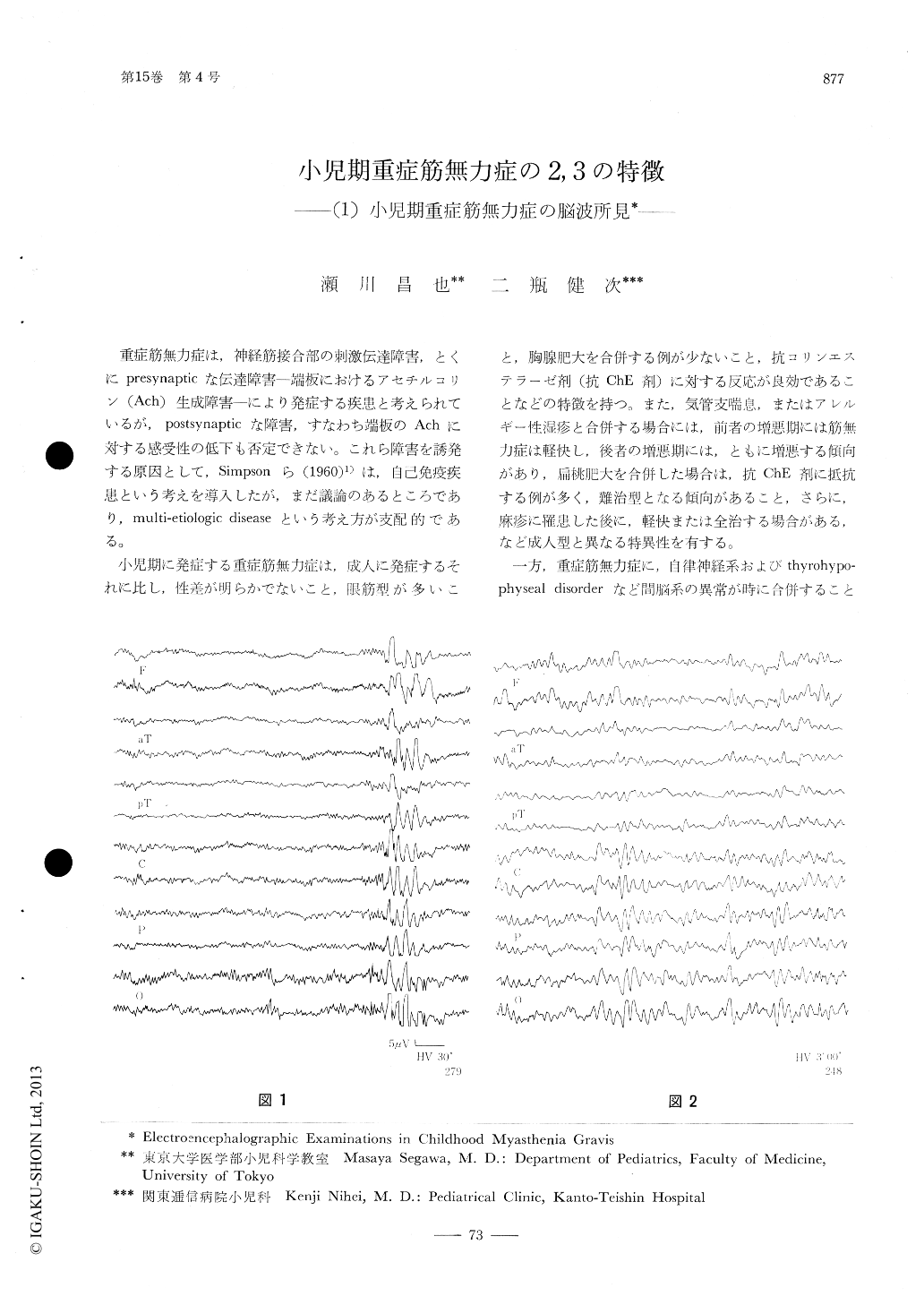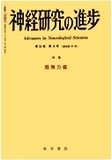Japanese
English
- 有料閲覧
- Abstract 文献概要
- 1ページ目 Look Inside
重症筋無力症は,神経筋接合部の刺激伝達障害,とくにpresynapticな伝達障害—端板におけるアセチルコリソ(Ach)生成障害—により発症する疾患と考えられているが,postsynapticな障害,すなわち端板のAchに対する感受性の低下も否定できない。これら障害を誘発する原因として,Simpsonら(1960)1)は,自己免疫疾患という考えを導入したが,まだ議論のあるところであり,multi-etiologic diseaseという考え方が支配的である。
小児期に発症する重症筋無力症は,成人に発症するそれに比し,性差が明らかでないこと,限筋型が多いこと,胸腺肥大を合併する例が少ないこと,抗コリンエステラーゼ剤(抗ChE剤)に対する反応が良効であることなどの特徴を持っ。また,気管支喘息,またはアレルギー性湿疹と合併する場合には,前者の増悪期には筋無力症は軽快し,後者の増悪期には,ともに増悪する傾向があり,扁桃肥大を合併した場合は,抗ChE剤に抵抗する例が多く,難治型となる傾向があること,さらに,麻疹に罹患した後に,軽快または全治する場合がある,など成人型と異なる特異性を有する。
20 (8 male and 12 female), (8 general type and 12 ocular type) cases of childhood myasthenia gravis who had been subjected to altogether 28 EEG examinations at different stages of the disease was analysed in respect of the frequency of EEG abnormalities and the relationship of their occurrence with several clinical parameters.
In 5 out of 20 patients, abnormal EEGs with paroxysmal discharges were recorded.

Copyright © 1971, Igaku-Shoin Ltd. All rights reserved.


